
Frontiers in Emergency Medicine
Scope & Guideline
Exploring breakthroughs in prehospital and emergency care.
Introduction
Aims and Scopes
- Emergency Medical Care and Procedures:
Research in this area encompasses clinical practices, procedural techniques, and innovative approaches in emergency medicine, aiming to improve patient outcomes during acute medical situations. - Trauma and Injury Management:
This scope addresses the assessment, treatment, and prevention of injuries, particularly in trauma cases. It includes studies on trauma scoring systems and predictive models for mortality and morbidity. - Public Health and Emergency Preparedness:
The journal also emphasizes the importance of public health, including studies on emergency response systems, disaster management, and the impact of environmental factors on emergency medicine. - Cardiovascular Emergencies:
Given the prevalence of cardiac events in emergency settings, this area focuses on research related to myocardial infarction, cardiac arrest, and related interventions for improving patient survival. - COVID-19 and Infectious Diseases:
Emerging themes in recent years have included the impact of COVID-19 on emergency medicine, focusing on diagnostic challenges, treatment protocols, and patient management during pandemics.
Trending and Emerging
- Telemedicine in Emergency Care:
The integration of telemedicine into emergency medical services has gained traction, especially following the COVID-19 pandemic. Research is focusing on its efficacy, challenges, and implementation in crisis situations. - Mental Health in Emergency Medicine:
There is a growing recognition of the mental health challenges faced by both patients and healthcare providers in emergency settings, prompting research into psychological support systems and interventions. - Innovations in Trauma Care:
Recent studies are emphasizing innovative approaches to trauma management, including new scoring systems and predictive analytics that enhance decision-making in acute settings. - Systematic Reviews and Meta-analyses:
An increase in systematic reviews and meta-analyses reflects a trend towards consolidating existing research to guide evidence-based practices in emergency medicine. - Impact of Socioeconomic Factors on Emergency Care:
Research is increasingly addressing how socioeconomic variables influence patient outcomes in emergency settings, highlighting disparities and driving initiatives for equitable care.
Declining or Waning
- Non-emergency Medical Conditions:
Research on conditions not typically categorized as emergencies, such as chronic diseases or non-urgent care, has decreased, likely as the field concentrates more on acute and urgent care scenarios. - Traditional Diagnostic Techniques:
There appears to be a waning interest in traditional diagnostic methods in favor of more innovative, technology-driven approaches, such as telemedicine and advanced imaging techniques. - General Medical Education:
While education remains important, the specific focus on general medical education topics—especially those not directly related to emergency medicine—has declined as the journal prioritizes research with immediate clinical relevance.
Similar Journals

JOURNAL OF EMERGENCY MEDICINE
Elevating emergency medicine with evidence-based insights.The JOURNAL OF EMERGENCY MEDICINE, published by Elsevier Science Inc, is a premier peer-reviewed journal dedicated to advancing the field of emergency medicine. Since its inception in 1983, this journal has served as an essential resource for researchers, clinicians, and students, contributing significantly to evidence-based practices and innovations in the emergency medical landscape. With an impressive ranking of 43 out of 109 in the field of Emergency Medicine according to Scopus, and a current impact factor placing it in the Q2 quartile, this publication is recognized for its rigorous scholarly content and relevance in tackling contemporary issues in emergency care. Although it does not offer open access, the journal remains widely respected for its contribution to the global emergency medicine community, fostering new ideas and discussions that drive the field forward. For those seeking to stay at the forefront of emergency medical research, the JOURNAL OF EMERGENCY MEDICINE is an invaluable addition to your academic endeavors.
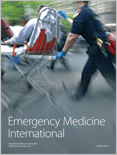
Emergency Medicine International
Advancing emergency care through cutting-edge research.Emergency Medicine International is a distinguished journal dedicated to the dynamic field of emergency medicine, published by HINDAWI LTD. As an Open Access journal since 2010, it ensures widespread dissemination of high-quality research, providing vital insights and advancements in emergency care and crisis intervention methodologies. With an ISSN of 2090-2840 and an E-ISSN of 2090-2859, the journal is indexed in Scopus, where it holds a commendable rank of #104 of 109 in the emergency medicine category, placing it in the 5th percentile. Spanning crucial years from 2014 to 2017 and 2022 to 2024, Emergency Medicine International has established a reputation for publishing significant findings that aid practitioners and researchers in improving emergency healthcare outcomes. Operating from its headquarters in Egypt, the journal serves as an essential resource for professionals and students alike, fostering the development of evidence-based practice in a critical area of healthcare.
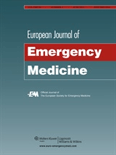
European Journal of Emergency Medicine
Shaping the Future of Emergency Medical PracticesWelcome to the European Journal of Emergency Medicine, a premier publication dedicated to advancing the field of emergency medicine. Published by Lippincott Williams & Wilkins, this journal serves as a vital resource for researchers, practitioners, and students alike, delivering high-quality, peer-reviewed articles that reflect the latest advancements and best practices in emergency care. With its publication history dating back to 1994 and a projected convergence until 2024, the journal has established itself as an influential voice in the field, boasting a commendable Q2 ranking in Emergency Medicine as of 2023. The Scopus ranking further reinforces its prestige, placing it in the 73rd percentile among its peers. Although currently not an Open Access journal, the European Journal of Emergency Medicine remains committed to making critical knowledge accessible and impactful within the global medical community. We invite you to explore cutting-edge research, innovative studies, and key clinical insights that are essential for improving patient outcomes and advancing emergency medical practices.
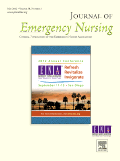
Journal of Emergency Nursing
Shaping Tomorrow's Emergency Care TodayJournal of Emergency Nursing, published by Elsevier Science Inc, serves as a premier platform for advancing the field of emergency nursing. Since its inception in 1975, this peer-reviewed journal has established itself as a vital resource for researchers, practitioners, and educators alike, with a notable impact factor and current ranking of #8 out of 32 in the Emergency Nursing category, placing it in the 76th percentile. The journal's commitment to the dissemination of high-quality evidence, innovative practices, and essential insights makes it an indispensable tool for those seeking to excel in acute care settings. Although not open access, the Journal of Emergency Nursing is dedicated to fostering knowledge and improving patient outcomes through robust research and comprehensive reviews, aligning closely with its mission to enhance emergency nursing practices and education through every issue until 2024 and beyond. For professionals and students keen on staying at the forefront of emergency care advancements, this journal provides a wealth of knowledge and resources, reflecting the critical issues and developments shaping the future of healthcare.
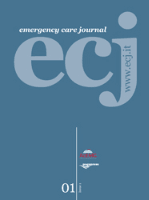
Emergency Care Journal
Connecting Theory and Practice in Emergency MedicineThe Emergency Care Journal is a vital open-access publication dedicated to the field of emergency medical services and nursing, published by PAGEPRESS PUBL. Since its inception in 2005, the journal has aimed to provide a platform for researchers, clinicians, and scholars to share knowledge and advance practices in the critical domain of emergency care. With an ISSN of 1826-9826 and an E-ISSN of 2282-2054, the journal is committed to enhancing accessibility and reaching a global audience. Although its Scopus rankings reflect a competitive landscape, particularly in the ranks of Health Professions and Emergency Medicine, the journal continues to serve as an essential resource for emerging studies and professional insights. Nestled in Italy, the journal seeks to bridge the gap between academic research and real-world application, ultimately improving patient care and outcomes in emergency settings. As it converges into the years 2023 and 2024, Emergency Care Journal stands poised to foster scholarly discussions and innovative research that are crucial to the evolving landscape of emergency medicine.

Canadian Journal of Emergency Medicine
Connecting Professionals for Enhanced Healthcare DeliveryWelcome to the Canadian Journal of Emergency Medicine, an esteemed publication in the field of Emergency Medicine published by SPRINGER HEIDELBERG. With its ISSN 1481-8035 and E-ISSN 1481-8043, this journal serves as a vital resource for cutting-edge research and reviews from 1999 to 2024, maintaining a prominent position in the academic landscape as evidenced by its Q2 ranking in the Emergency Medicine category and a commendable Scopus ranking of #35 out of 109 journals. The journal is committed to advancing medical practices and improving patient outcomes through rigorous- peer-reviewed articles that address contemporary challenges and innovations in emergency care. Though it is not an open-access publication, it remains an essential platform for sharing knowledge among health professionals, researchers, and students dedicated to optimizing emergency medical services and enhancing overall healthcare delivery.
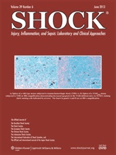
SHOCK
Pioneering knowledge for life-saving interventions.SHOCK is a premier academic journal dedicated to advancing the fields of Critical Care and Intensive Care Medicine, as well as Emergency Medicine. Published by LIPPINCOTT WILLIAMS & WILKINS, this journal stands out with an impressive impact factor that underscores its significance within the academic community. With its Quartile 1 ranking in both critical care and emergency medicine, SHOCK ranks among the top journals in its category, reflecting its commitment to disseminating groundbreaking research and clinical advancements. The journal has continuously provided a platform for innovative studies since its inception in 1994 and will continue to do so until 2024. The articles featured in SHOCK are invaluable for researchers, professionals, and students striving to stay abreast of the latest developments and trends in critical and emergency care. The journal fosters a robust exchange of knowledge and best practices, making it essential reading for anyone dedicated to improving patient outcomes in these high-stakes medical disciplines.
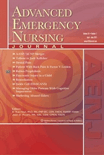
Advanced Emergency Nursing Journal
Bridging Theory and Practice for Better OutcomesAdvanced Emergency Nursing Journal, published by Lippincott Williams & Wilkins, stands as a key resource within the domains of Emergency Medicine and Emergency Nursing. With a commitment to advancing the field, this journal provides a platform for rigorous research, critical reviews, and innovative practices aimed at enhancing patient care in emergency settings. Though it holds a Q3 ranking in both related categories as per the 2023 metrics, its global reach spans various aspects of emergency care, promising insights that are crucial for both professionals and academics alike. Covering topics from clinical procedures to policy analysis, the journal invites submissions that aim to bridge theory and practice, highlighting the importance of evidence-based approaches in emergency nursing. Researchers, educators, and healthcare practitioners can Find more information and explore their own contributions in a dynamic environment that continuously evolves with the field. Whether you're seeking to stay current with the latest advancements or to publish your findings, this journal is an essential asset for those dedicated to improving care in urgent medical situations.

BMC EMERGENCY MEDICINE
Transforming emergency medicine through innovative research.BMC Emergency Medicine is a premier, open-access journal that has been at the forefront of the field of emergency medicine since its inception in 2001. Published by BMC in the United Kingdom, this journal is distinguished by its impact factor and remarkable Q1 ranking in emergency medicine, placing it among the top-tier publications in this vital area of healthcare. With a current Scopus rank of #30 out of 109 in the category of Emergency Medicine, and occupying the 72nd percentile, BMC Emergency Medicine is a leading platform for researchers and practitioners alike to disseminate their findings related to urgent and critical care. The journal embraces a broad scope within emergency medicine, encouraging submissions on a wide range of topics including clinical practice, innovative techniques, public health, and policy issues that critically affect emergency care. The open-access model ensures that high-quality research is readily available to the global community, fostering collaboration and advancing knowledge in the field. For those dedicated to improving patient outcomes in emergency settings, BMC Emergency Medicine represents an invaluable resource and community.

Notfall & Rettungsmedizin
Leading the way in emergency medicine scholarship.Notfall & Rettungsmedizin is a leading journal in the field of Emergency Medicine, published by Springer in Germany. With a focus on advancing the science and practice of emergency care, this journal offers a platform for original research, critical reviews, and case studies that address the latest challenges and innovations in the field. The journal ranks in the Q2 category of Emergency Medicine for 2023, reflecting its commitment to high-quality scholarship and impactful research, evidenced by its Scopus ranking of #51 out of 109, placing it within the 53rd percentile. Although it does not provide open access, the content is invaluable for researchers, healthcare professionals, and students engaged in emergency medicine. From its inception in 1999 to its continuous publication through 2024, Notfall & Rettungsmedizin remains a vital resource for disseminating knowledge and fostering professional development in emergency care worldwide.